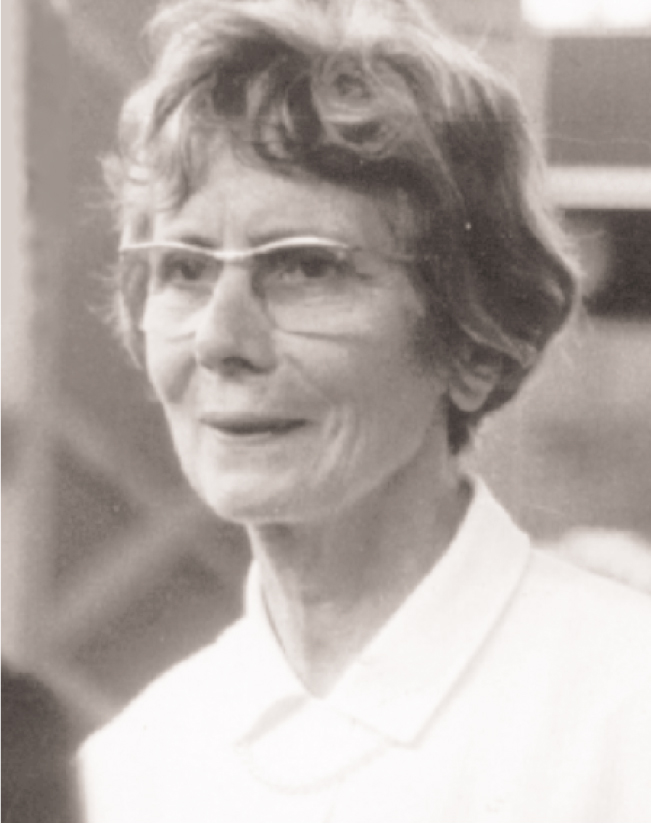Yvette Cauchois
DOI: 10.1063/1.1372125
Yvette Cauchois, a chemical physicist who profoundly influenced the development of x-ray spectroscopy and x-ray optics, died on 19 November 1999, following a bout with bronchitis during a visit to northern Romania. Cauchois had been a professor of chemical physics at the Sorbonne in Paris and, from 1953 to 1978, had served as the director of the Laboratoire de Chimie Physique (Laboratory of Physical Chemistry) at the Sorbonne (now the University of Paris VI).
Born in Paris on 19 December 1908, Cauchois had been attracted to science since childhood. In 1928, after she received her bachelor’s degree in physics from the Sorbonne, she entered the Laboratory of Physical Chemistry, whose director was Jean Perrin. In 1933, she defended her doctoral thesis in which she reported on the use of curved crystals in transmission for high-resolution x-ray analysis. That same year, Cauchois was appointed as the research assistant at CNRS (National Center for Scientific Research), becoming the research associate in 1937. She became an associate professor at the Sorbonne in 1945 and a full professor in 1951. In 1953, she was appointed as the chair of chemical physics. She was nominated as professor emeritus after she retired in 1978.
Cauchois established the fundamental principles of a new x-ray spectrometer that was named after her and was introduced in the early 1930s. The Cauchois spectrometer had the triple advantage of being highly luminous, having a high resolution, and being easy to manipulate. Using the spectrometer, she was the first (in 1934) to observe weak emissions in gases, and later to resolve numerous multiplets. Specialized laboratories in Europe, the US, Japan, and Australia were highly interested in this new technique. Universally used for the analysis of x rays and gamma rays, it brought on a surge of development in the physics of radiation in these spectral regions.
In 1934, Cauchois pointed out that one could focus x-ray radiation with a curved crystal used in reflection for use in monochromators for x-ray scattering and then later in soft x-ray high-resolution spectroscopy. She was a pioneer in the development of x-ray imaging techniques using a curved crystal. During the 1930s and 1940s, she established the energy levels of atoms, singly or multiply ionized from an inner shell, to prove the existence of rare elements such as polonium and astatine and to develop actinide spectroscopy. After becoming the head of the Laboratory of Physical Chemistry, she focused on the subject of x-ray absorption and emission in solids and chemical effects on x-ray spectra.
In Europe, Cauchois was the first to develop and use sources of synchrotron light, initially at the National Laboratories of Frascati near Rome from 1963 to 1964, and in the early 1970s at LURE (Laboratory for the Use of Electromagnetic Radiation) in Orsay, France. She also became interested in extraterrestrial x-ray radiation; the Laboratory of Physical Chemistry collaboration with astrophysicists led to the obtainment of x-ray images of the Sun in 1970.
Cauchois made important contributions to the production of electron beams and the study of their interaction with matter, and to research on nuclear fluorescent resonance. Under her guidance, the Laboratory of Physical Chemistry was, for a long time, the only French center engaged in fundamental research in x-ray spectroscopy.
She was the second woman, after Marie Curie, to be president of the French Society of Physical Chemistry. She created an excellent teaching program of modern chemical physics and surrounded herself with competent colleagues in every discipline who were dispersed among many laboratories in France and abroad. When the laboratory at the Rue Pierre et Marie Curie in Paris became too small, she created a center for chemical physics at Orsay during the 1960s, long before the University of Paris XI was established. With zeal for her subject, she made progress in a field of French research during a period when few women dedicated themselves to science.
In 1933, Cauchois received the Ancel Prize from the French Physical Society. She received four prizes from the French Academy of Sciences: the Henri Becquerel Prize in 1935, the Gizbal-Baral Prize in 1936, the Jerome Ponti Prize in 1942, and the Triossi Prize in 1946. She also was awarded the Henry de Jouvenel Prize in 1938 by the French Ministry of Education and the Medal of the Czechoslovak Society of Spectroscopy in 1974. In the 1960s, Cauchois was decorated as Commander of the Order of the Ministry of Education, Officer of the Honor Legion, and Officer of the National Merit by the French Republic. She received the Gold Medal of the University of Paris in 1987.
Cauchois was not only a woman of science, but she showed great interest in young and underprivileged people to whom she extended emotional help as well as material support. She had a great sense of humor and knew how to entertain others with her storytelling. She enjoyed the arts, particularly music—she was an expert on the grand piano—and she loved poetry. Her colleagues will remember her as someone who gave the best part of her life to her laboratory.


More about the Authors
Christiane Bonnelle. University of Paris VI, France .
